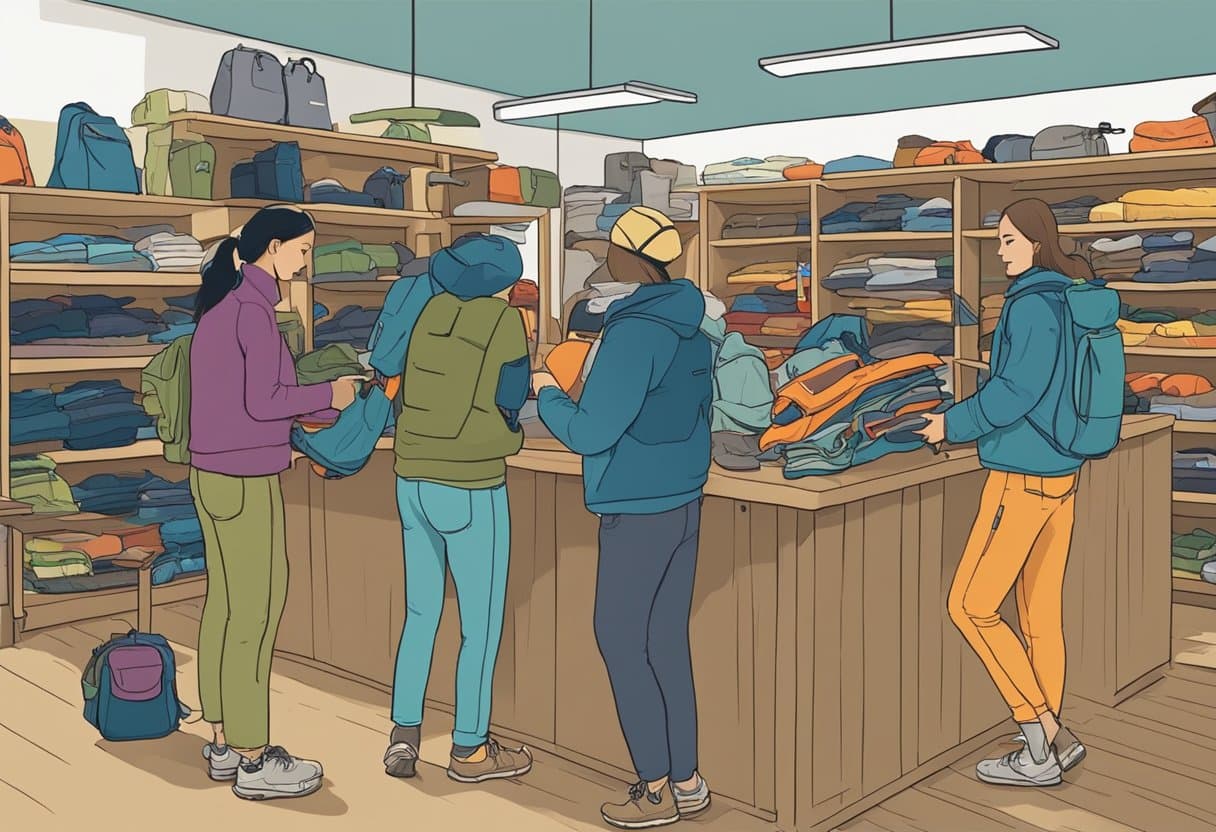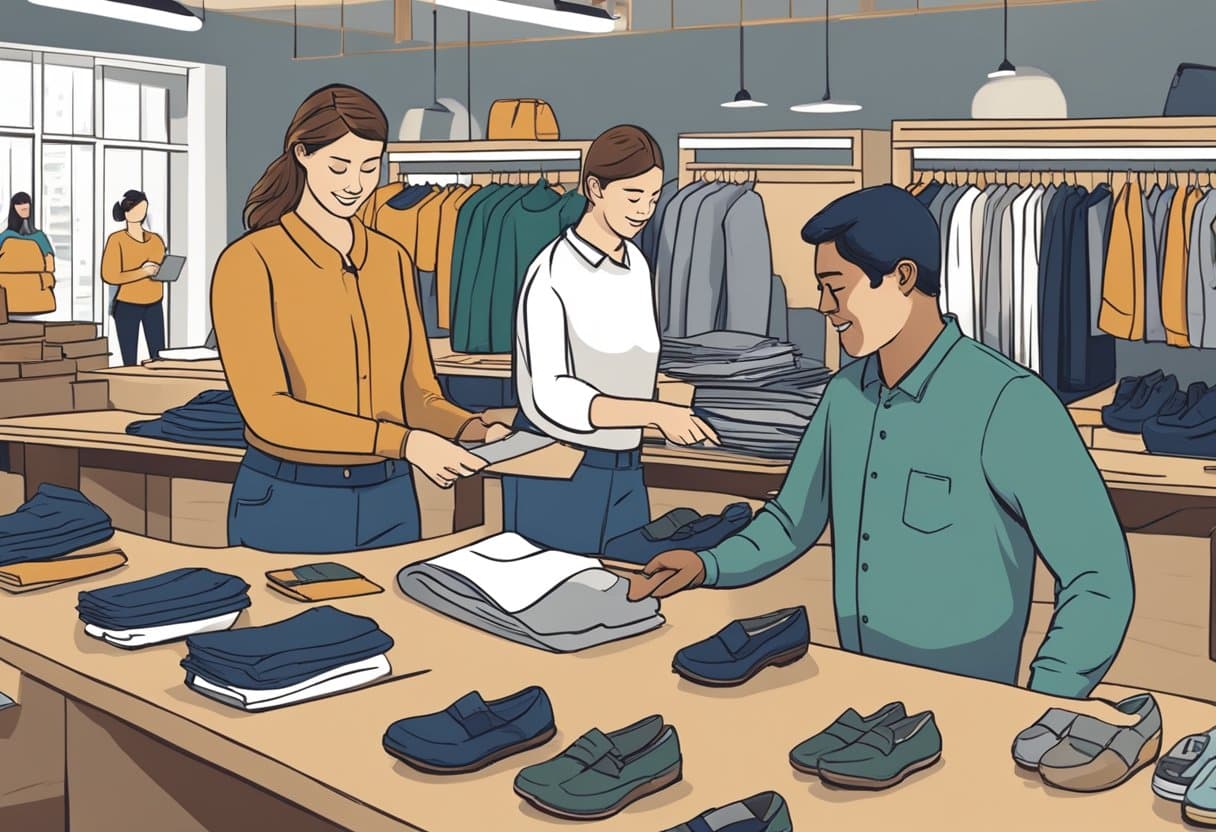Patagonia Trade-In Vs. Selling Patagonia Resale Items Online

Patagonia, the well-known outdoor clothing and gear company, has taken sustainable practices and environmental responsibility to new heights with their innovative "Patagonia Trade-In" program. The program encourages customers to recycle their used Patagonia products, in exchange for store credit, by trading them in at local stores or through the company's website. This initiative not only highlights the company's commitment to environmental stewardship but also promotes a circular economy within the outdoor industry.
ClICK HERE TO BECOME A VENDOR!

The "Patagonia Trade-In" program operates under the philosophy that preserving the environment and minimizing waste can be achieved through prolonging the life cycle of outdoor gear. By offering customers an incentive to return their used items, the company can repair, refurbish, and resell these products at a discounted price through their "Worn Wear" platform. This benefits both the consumers and the environment by providing access to high-quality gear at lower costs and reducing the need for new resources.
In addition to promoting the recycling and repurposing of outdoor products, the "Patagonia Trade-In" program fosters a sense of brand loyalty and deepens the connection between the company and its customers. This proactive approach to sustainability demonstrates the company's dedication to not only providing innovative outdoor gear but also pioneering industry-wide change that benefits the planet and the people who enjoy its beauty.
Understanding the Patagonia Trade-In Program
How the Program Works
The Patagonia Trade-In Program, also known as Worn Wear, is a commendable initiative by Patagonia that encourages customers to recycle and repurpose their used Patagonia products. The program's primary goal is to reduce the environmental impact caused by the constant demand for new products and lessen the strain on Earth's natural resources.
Customers can bring their used Patagonia clothing and gear to a participating store or mail it through wornwear.com. In return, they receive a credit towards their next purchase. This credit amount varies depending on the condition and type of the item traded in.
Here's a simple breakdown of the process:
- Assess the condition of your used Patagonia item.
- Trade in your item at a Patagonia store or via wornwear.com.
- Receive a credit based on the item's condition and type.
- Use the credit to buy new Patagonia products.
Benefits for the Environment and Shareholders
The Patagonia Trade-In Program offers significant benefits for both the environment and the company's shareholders. By promoting the recycling and repurposing of used products, the program helps conserve valuable resources and reduce waste. This environmentally friendly approach contributes to Patagonia's reputation as a sustainable and responsible business.
Some advantages of the program include:
- Reduced waste: By recycling used items, Patagonia minimizes the waste that would otherwise end up in landfills.
- Conserved resources: Recycling and repurposing materials lessen the demand for new resources and energy, benefiting the environment.
- Awareness: The program raises awareness about the importance of environmental stewardship and responsible consumption.
- Customer loyalty: Offering credits for trading in used items may encourage customers to continue supporting Patagonia and its sustainable practices.
In conclusion, the Patagonia Trade-In Program not only fosters an eco-conscious mindset among consumers but also bolsters the company's commitment to protecting the environment and conserving Earth's resources.
Selling items online vs. Patagonia trade-in

Benefits of selling online
When comparing selling items online to participating in Patagonia's trade-in program, it's important to consider the pros and cons of each option.
Online platforms: Selling items online can provide access to a wider audience. Platforms like eBay, Poshmark, and Depop allow users to showcase their items to potential buyers from all around the world.
Control over pricing: Selling items individually gives the seller more control over pricing. They can set their desired price and negotiate with potential buyers as needed.
Speed of sale: Selling items online, especially on popular platforms, may result in faster sales, as sellers can take advantage of high-traffic websites and large customer bases.
However, it's not all smooth sailing when selling items online. Some challenges include:
- Shipping costs: Sellers are often responsible for covering shipping costs, which can eat into profits.
- Returns: Dealing with returns and disputes can be time-consuming and frustrating.
- Fees: Most platforms charge fees for listing and selling items.
In contrast, the Patagonia trade-in program offers a more streamlined process, specifically designed for Patagonia products.
- Ease of use: Patagonia's program simplifies the recycling and reselling process, providing a hassle-free experience for customers.
- Environmental impact: By participating in the Patagonia trade-in program, customers contribute to a more sustainable shopping experience, supporting the brand's commitment to environmental responsibility.
- Patagonia store credit: While the trade-in program doesn't offer cash in return for items, customers receive store credit, which they can use to purchase new or used Patagonia products.
In summary, sellers who prioritize convenience and sustainability might prefer the Patagonia trade-in program, while those looking for a potentially wider market and more control over pricing might opt for selling items online.
Participating in the Trade-In Process

Eligible Items for Trade-In
When participating in Patagonia's trade-in process, it is important to know which items are eligible. Patagonia accepts a variety of used gear and clothing, including but not limited to:
- Fleece jackets
- Rain jackets
- Down jackets
- Pants
- Shorts
- Shirts
- Hats
It is essential to ensure that the items are clean and in good condition. Heavily damaged or worn-out items will not be accepted.
The Evaluation of Gear
Before accepting your used items, Patagonia carefully evaluates each piece of gear. The evaluation process includes:
- Inspecting for damages: Any tears, stains, or excessive wear will reduce the trade-in value of your item.
- Checking the function: Patagonia verifies that all zippers, closures, and adjustments are fully functional on the item.
- Seasonal demand: The value of your item may fluctuate based on the current season and demand for specific pieces of gear.
After the evaluation process is complete, you will receive an estimate of your item's trade-in value.
Packaging and Shipping Your Items
To ensure a smooth trade-in experience, follow these steps when packing and shipping your gear:
- Clean your items: Launder your clothing according to the care instructions, as Patagonia only accepts clean items for the trade-in process.
- Pack your gear: Use appropriate packaging materials to protect your items during transport.
- Include your trade-in order number: It is important to include your trade-in order number with your shipment, as this helps Patagonia identify and process your items more efficiently.
- Ship your items: Patagonia provides a shipping label for you to use, so all you need to do is drop off your package at the appropriate shipping provider.
Upon receiving and evaluating your items, Patagonia will then recycle, repair, or refurbish them according to their condition, giving your used gear a new life while promoting a more sustainable future.
Maximizing Your Trade-In Value

Assessing Item Condition
Before trading in your used Patagonia clothing, it's important to assess the item's condition. Look closely at jackets, fleeces, and other clothing items for men, women, and kids. Potential areas to examine include:
- Size and fit
- Material and quality
- Presence of damage, such as tears, stains, or fading
- Functionality of zippers, buttons, and other essential components
- Cleanliness of pockets and interiors
Remember that items with minimal wear and in good condition will fetch a higher credit value.
Preparing Your Items
After assessing the condition of your items, prepare them for trade-in by following these steps:
- Clean all clothing items thoroughly, not creating any additional damage.
- Empty all pockets, removing any personal belongings.
- Fold or package each item neatly to ensure they maintain their shape and size during transportation.
- Keep a detailed inventory of your trade-in items to streamline the process.
By presenting clean, well-maintained items, you increase the chances of receiving a higher credit value.
Understanding Credit Values
The final aspect of maximizing your trade-in value is understanding the credit values assigned to specific types of items. Patagonia offers varying credit amounts based on certain criteria, including:
Item Type | Condition Range | Credit Value ($) |
Jackets | Good-Excellent | 40-100 |
Fleece Products | Good-Excellent | 20-50 |
Good-Excellent | 10-40 | |
Good-Excellent | 10-40 | |
Kids' Clothing | Good-Excellent | 5-20 |
Keep in mind that these values are approximate, and the final credit offer is determined by Patagonia upon inspection of your items. However, by carefully assessing the condition of your items, preparing them for presentation, and understanding the potential credit values, you can maximize the return on your trade-in investment.
Exclusive Services for Trade-In Customers

To provide exceptional customer experience for those taking part in the Patagonia Trade-In program, several exclusive services are available to enhance the process.
Fast Rate Shipping Offers
Trade-in customers can benefit from Fast Rate Shipping offers. Upon initiating a trade-in, Patagonia provides a prepaid shipping label to make the process smooth and hassle-free. The shipping process is further enhanced by:
- Expedited shipping times, ensuring a quick delivery to and from Patagonia
- Real-time tracking information to keep customers informed about their orders
- Hassle-free returns, in case any issues arise
These measures guarantee reliable and trustworthy transactions, reinforcing the ease and accessibility of trading in worn wear.
Exclusive Access to Worn Wear Events
As a trade-in customer, one also gains access to Exclusive Worn Wear Events. These events showcase the best of Patagonia's commitment to sustainability and environmental conservation while delivering value to their customers. The highlights of these events include:
- Unique previews of pre-owned items, allowing patrons to acquire high-quality gear at a fraction of the price
- Exclusive discounts on selected items, enhancing the shopping experience
- Networking opportunities with like-minded individuals who share the values of sustainability and environmental awareness
By participating in the Patagonia Trade-In program, customers receive attractive benefits such as Fast Rate Shipping and exclusive access to Worn Wear Events. These services underscore Patagonia's dedication to creating a sustainable, eco-friendly shopping experience for environmentally conscious consumers.
Frequently Asked Questions

How does the Patagonia Worn Wear program operate?
The Patagonia Worn Wear program aims to reduce environmental impact by encouraging customers to trade in their used Patagonia items. In exchange for their used gear, customers receive a voucher for future purchases. The traded-in items are then refurbished and resold on the Worn Wear website, giving them a new life.
What items are eligible for Patagonia's trade-in policy?
Patagonia accepts a wide range of items for trade-in, including outerwear, apparel, and gear such as packs and bags. However, only items in good condition and still functional are eligible for trade-in. Patagonia reserves the right to decline any item based on its condition or other factors.
How is the trade-in value for a Patagonia item determined?
The trade-in value of an item is determined by its condition, age, and demand in the resale market. Patagonia uses a standardized assessment process to evaluate items. Generally, items that are in better condition, from recent collections, and in high demand will receive a higher trade-in value.
Can I trade in my Patagonia items online, or does it have to be in-store?
Both options are available for customers. They can choose to trade in their items at participating Patagonia retail stores or use the online process by visiting the Patagonia Worn Wear website, filling out a form, and shipping their items to the designated address.
What does Patagonia do with the clothes collected through its trade-in program?
The clothes collected through the trade-in program are cleaned, repaired if necessary, and then resold on the Worn Wear website at a discounted price. By doing this, Patagonia aims to give these items a second life and reduce waste, ultimately contributing to a more sustainable fashion industry.
Are there any differences in the Patagonia trade-in program across countries?
While the core principles of the Patagonia trade-in program remain consistent across countries, there may be some regional differences in terms of accepted items, trade-in values, and participating store locations. It is recommended for customers to check their local Patagonia website or store for specific details about the program in their country.
